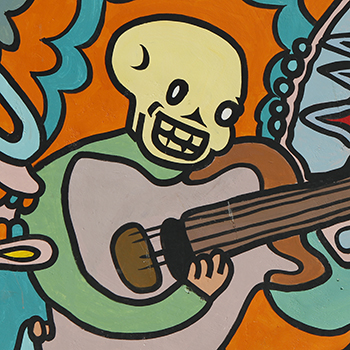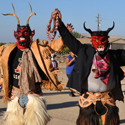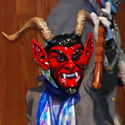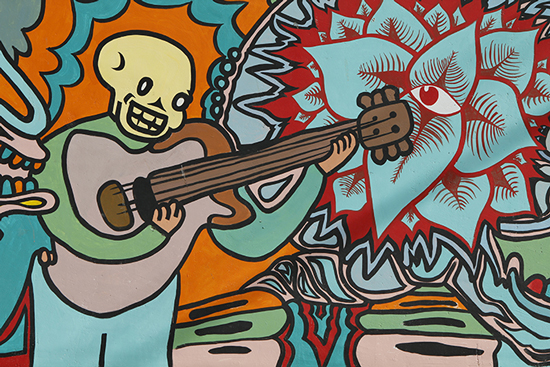
ACTA is working on a new initiative called the Sounds of California – a multifaceted project involving performance, recording, archiving, and public dialogue about the cultural soundscapes of this state.
Among the fifty states, California is the most populous and one of the most diverse, comprised of people who, for many generations, have emigrated from all parts of the globe. It is home to the largest Native American population, and one of the largest populations of people who identify as mixed race.
Today, at a time when public discussion around immigration policy is clamorous, one in four immigrants in the U.S. lives in California. The state has become one of the first states to achieve a majority of people of color. With foreign-born residents representing more than a quarter of California’s total population, Sounds of California maps an auditory journey of the music, songs, voices, and expressive sounds that contribute to a sense of belonging in diverse California communities.
Our Sounds of California partners are the Smithsonian Center for Folklife and Cultural Heritage, the national Latino public radio network Radio Bilingüe, and the American Folklife Center at the Library of Congress. Our teams have been meeting, researching, and piloting program models over the past year, joined also by colleagues at the Oakland Museum of California, among others. We’ve been dreaming of a project that could harness the state’s geography, linguistic diversity, and rooted cultural expressions for sustained public engagement.
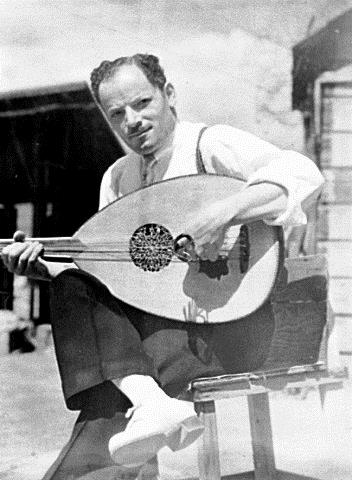 As a collective we take much inspiration from the Northern California Folk Music Project historic field recordings collected by Sidney Robertson Cowell during the Works Project Administration between 1938-1940. This remarkable collection contains 35 hours of folk music recorded in twelve languages representing numerous ethnic groups and 185 musicians. She asks, “Is there a California Folk Music?,” in a parallel vein to other regional folk musics that were being collected in other parts of the United States. Robertson concluded that much of California’s folk music is the music of immigrant communities who located in the state and she set out to document those sounds which include Armenian oud music from Fresno, Portugese fado music from Oakland, “Spanish Californian” choral music from Carmel, among others. As we delve into Robertson’s collections, we are inspired to ask similar questions about what are the significant California-made sounds of today.
As a collective we take much inspiration from the Northern California Folk Music Project historic field recordings collected by Sidney Robertson Cowell during the Works Project Administration between 1938-1940. This remarkable collection contains 35 hours of folk music recorded in twelve languages representing numerous ethnic groups and 185 musicians. She asks, “Is there a California Folk Music?,” in a parallel vein to other regional folk musics that were being collected in other parts of the United States. Robertson concluded that much of California’s folk music is the music of immigrant communities who located in the state and she set out to document those sounds which include Armenian oud music from Fresno, Portugese fado music from Oakland, “Spanish Californian” choral music from Carmel, among others. As we delve into Robertson’s collections, we are inspired to ask similar questions about what are the significant California-made sounds of today.
The themes of migration and immigration continue to define California – and the changed demographics of our state in which whites are no longer a majority – a shift which is underway for the rest of the country over the next 30 years. It is imperative that we come to understand and appreciate the different cultural communities that compose our nation. This is a historic moment – just 50 years after the passage of the Hart-Cellars Act which opened up immigration – to record, to celebrate, to reflect, and to archive these Sounds of California.
With initial funding from the Smithsonian Grand Challenges Program, our teams piloted three types of programs with our partners – commissioning recordings by ethnographers and videographers; curating a live recorded public program featuring short performances and public dialogue; and the production a radio program (see Sounds of California Sampler below).
We’re pleased to share the new video I co-produced and directed with videographer Jon Ching recording the sounds and performances of Grupo Nuu Yuku and Banda Brillo – featuring the music and dance of two indigenous Mixteco farmworker groups from Oaxaca, Mexico, who have made the San Joaquin Valley towns of Madera, Fresno, Kerman, Los Banos, and Selma home. The video is one of the five recordings our teams commissioned from ethnograpers and videographers to initiate the Sounds of California collection.
Banda Brillo de San Miguel Cuevas is a ten-piece wind band formed in 2005 by Emiliano Bernardino Flores, an immigrant farmworker in Fresno. The group’s repertoire includes the most popular Mixtec dance rhythm, the chilena, plus a wide range of traditional regional Mexican and Oaxacan music, including rancheras, boleros, marches, and polkas. Grupo Nuu Yuku’s danza de los diablos, or dance of the devils, represents a regional tradition practiced in the Juxtlahuaca district of the Mixteca Baja in northern Oaxaca, Mexico. This dance is performed during patron saint fiestas, such as the feast day of the Virgin of Guadalupe on December 12. It was historically part of the dance drama enacted as the Moros y Cristianos series of festival performances that commemorate the battles between Moors (Muslims) and Christians during the period known as the Reconquista (from the eighth century through the fifteenth century) in Spain.
Sounds of California will be an ongoing collaborative initiative, and we hope to involve you. Please stay tuned as we develop new channels and opportunities for you to discuss, hear, listen, create, and contribute to our collective understanding of California soundscapes. We also invite you to follow us as the Sounds of California takes to the national stage this month at the 2016 Smithsonian Folklife Festival: join us via Facebook, Twitter (@CalTradArts), and at the hashtag #SoundsofCA.
|
Sounds of California Sampler |
|
|
|
Hearing Migration Through Music |
|
|
Archive Documents California Immigrant Story, Through Music |
|
Live from Oakland: The Sounds of California |
|
|
|
Listen to a podcast about the December 2015 concert in Oakland, with special guest Daniel Sheehy, director of Smithsonian Folkways Recordings (en español). |
|
Watch the videos of the Oakland: Sounds of California program: |
|
|
|
Vincent Medina (Muwekma Ohone) presents a story about the Blood Monster in the Chochenyo language. |
|
Palabuniyan Kulintang Ensemble – Danongan Kalanduyan, Director |
|
|
|
Diamano Coura West African Dance Company – Zak and Naomi Diouf, Directors |
|
|
Grupo Nuu Yuku—Danza de los Diablos de San Miguel Cuevas & Banda Brillo de San Miguel Cuevas |
|
|
Sounds of California: Featured Artists in Dialogue moderated by host Dan Sheehy |

